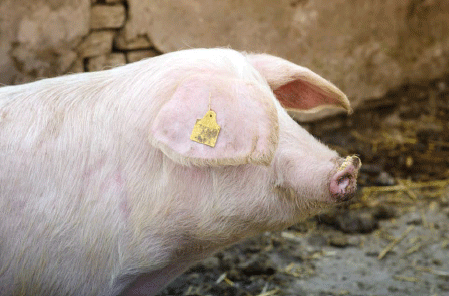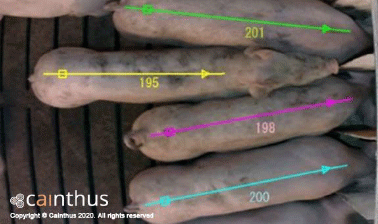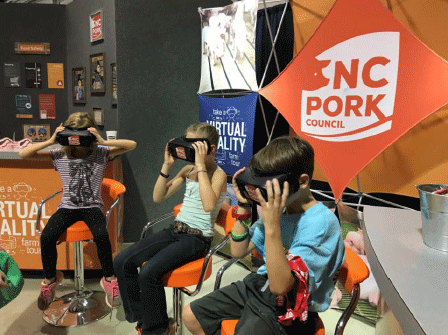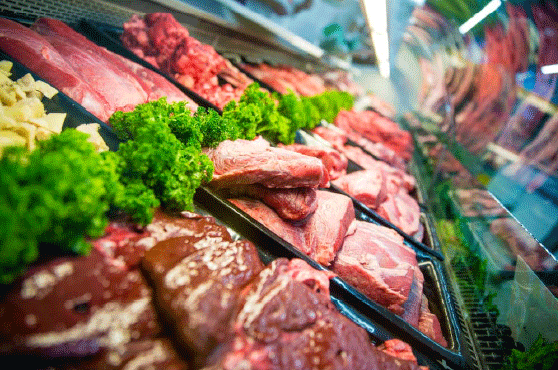Introduction
Pork’s historic position as the world’s most popular meat is no more. 2019 was characterized by the explosion of African Swine Fever in China and subsequent slaughter of approximately half of that country’s pigs, representing about 25% of the world's production. Allowing for this catastrophe the exorable rise in the global consumption of chicken ensured it always going to result in its accession to No.1 spot worlds, but the rapid growth in the consumption of seafood, and now of alternative proteins threatens meat producers with market disruption as never before.
Despite cultural and religious exclusions in many societies pork was traditionally the most widely eaten meat in the world, accounting for 36% of all meat consumed, with Asia is the biggest consumer. The continued growth in the middle class, with China’s expected to double in the next 15 years, surely heralds a return to favor for pork. Most critically the world’s leading producers including China, the US, Brazil, Spain and Russia, face future challenges that could be reduced, or even eliminated, with the implementation of digital and other data driven technologies.
From a consumer (or ‘Prosumer’) standpoint concerns over animal welfare, the use of ingredients in the feed that they don’t approve of (e.g. antibiotics) and the environmental footprint of pork production predominate. The threat of displacement by other meats (poultry, fish) and increasingly plant based, and other protein alternatives is real and the billions of dollar valuation by start-up’s as money pours into IPOs demonstrate investor appetite for ‘clean’ meats. Processors focus on employee safety and welfare priorities even while trying to improve meat production efficiencies. For producers and farmers disease mitigation, animal health and performance are top of mind even as labor shortages on farm dominate conversations in countries all over the world. What is required to address the concerns of all three groups of stakeholders. Can feed conversions be reduced to below 2:1? Can farmers healthily gain more pigs per sow, and keep them alive? How do we maximize meat yield from each carcass? Despite these challenges and the increased need for production efficiencies the farming of pigs has changed little in the last decades, often relying on technologies from the 1970s to accomplish these tasks.
The eight digital technologies framework (PwC) is a useful way to review technologies with the potential to be the most transformative in changing pig production. They can benefit the pig industry in ways that meet these concerns and offer the opportunity for improving processes, increasing productivity and efficiencies while making the animal production process safer for both humans and animals alike.
3D Printing
While the implementation of 3D printing is progressing somewhat slower than some of the other technologies, its value is unquestioned when speed is of the essence and the remoteness of the farm is a challenge. The primary capability of 3D printing is physical items from data received over the net. Imagine the potential to allow farmers to print in minutes parts or pieces for machinery or equipment that break and interrupt the farmer’s ability to carry on with daily duties as they wait hours or days for the replacement to arrive. An example could be for suppliers of pig or feed equipment from Germany or China could repair remote on the farm in Africa. Technology such as a 3D printer save time, resources and certainly productivity.
HogSlat is a US based company that is experimenting with the technology to print plastic prototype machine parts using a 3D modeling software system and liquid plastic as “ink.” The printer itself is comparable in size to a mini refrigerator and can print a product up to 10”X10”X12” in size. While replication is functional today it can take several hours or possibly even days to create the replacement part. In an urgent situation, this may not be feasible but points to the future.
Food printers are now available at an ‘affordable’ price of $2,000. Using food ingredients today the printing of pizzas and cakes is possible using starches and proteins but with the inclusion of ingredients derived from pork production, printing pork patties, sausage will be possible. Already one company, Meadow meats, has announced a desire to print meats including pork.
Robots
The agricultural robotic industry is expected to reach sales of $8.82 to $15 billion within the next five years. Robots are being embraced in many agricultural sectors including crops, vegetables, processing plants and on farm and anywhere finding qualified labor is a challenge.
Swine Robotics has an entire line of robots designed to improve animal welfare, safety and production. The Boar Bot is a robotic boar which individually checks each sow for heat detection and visits each sow for just enough time to determine her level of interest, improving heat detection and accuracy in insemination and farrowing rates.
Danish consortium SkaldTek pulled together 12 different companies, institutes and universities to build a joint project designed to improve the entire swine production process using improved technologies such as robots and sensors. According to SkaldTek not much has changed in swine production for over 40 years. The consortium’s focus is to improve swine barn operations and equipment, address environmental concerns (reducing odor and emissions) and lessen societal concerns (animal welfare).
On the assembly line, robots are replacing many of the more dangerous roles in meat processing and packing. These robots use artificial intelligence and machine learning to create algorithms designed to cut the meat in the most efficient manner. New Zealand’s Scott Technologies designs robots for meat processing and pig carcasses and in 2016, the world’s leading meat processor, Brazil’s JBS, bought a “controlling share” of Scott for $41 million, a clear sign that the world meat producers see this as a critical part of their future.

Ramsta Robotics designed Clever Cleaner, a robot with the sole purpose of cleaning empty swine houses. Company documents explain that a cleaner environment rid of mites, fungal spores and bacteria, will lead to healthier pig production. The JHminiStro is designed to distribute bedding materials or separate particles such as sawdust and manure, possibly saving up to 30% of bedding materials. It can also distribute feed roughage such as corn silage to sows’ Washpower’s Procleaner is another robot designed especially for cleaning pig houses.
Robotic pork processing companies in this area include Jarvis who offer a line of several different robots to perform an array of meat cutting tasks and touts its easy-to-clean machine, the KUKA robot, which demonstrates its skill at meat cutting in a YouTube video.
Drones
There is little justification for the use of unmanned aerial vehicles (UAV’s) or drones in pig production, although the use of micro drones, smaller than the size of your hand, are growing and might negotiate the indoor environment better without disturbing the pigs. Drones are being used extensively in crops, to scout fields, and potentially, they could be used to scout outdoor herds and check for illness or vices, but other than this, drones do not offer a clear opportunity for pig producers.
Sensors
E-Doctor is the brainchild product of SmartAHC, a Singapore-based startup working its way into China’s pork industry. The wearable measures each individual sow’s physiological data and combines with artificial intelligence to predict disease risk and ovulation time. With a low energy consumption model, the device can be worn for up to three years for data collection and analysis. ETag, from the same company is fitted to a pig’s ear, with no need for human updating or adjustment, remotely identifying pigs and maintaining accurate records, creating an individual report for each pig on the farm.
Another company in the same area is Agrisyst. Ear tag sensors monitor and document information representing the entire life of the pig supplying customers with real time data immediately available for full reports including veterinarians, food suppliers, processing plant reports and data. Financial reports and analysis generated from this can help farmers to procure bank loans and contracts more effectively.
Soundtalks, who have received substantial investment from Boehringer Ingelheim, and Fancom are both using sensor to analyze breathing and coughing sounds to identify respiratory illness and early stage infections. Fancom also produces a system called eYeScan, which uses computer imaging to determine calculate an animal's weight.
Smartbow, an Austrian start-up acquired by global animal health leader Zoetis, has a strong presence in the dairy industry for its sensors and is now demonstrating the use of it technology, to monitor animal activity and movement and detect heat cycles, in pigs.
Until recently, monitoring ammonia in pig houses was nearly impossible. Sensors were overly sensitive to dust, humidity and the gas itself. Big Dutchman’s DOL 53 withstands these challenges and correctly monitor ammonia concentration and adjust the ventilation system as needed for pig comfort.
Artificial Intelligence
Given China’s twin dominance of the world of artificial intelligence and pork production it is not surprising to see a proliferation of AI dedicated to pig farming applications. These aim to track animals, keeping track of their movement and consumption. Pairing with pig producer, Dekon Group and feed manufacturer, Tequ Group, China’s tech giant Alibaba, is attempting to incorporate artificial intelligence and specifically machine vision technology to alleviate many of the difficulties some of these large pig farms face. Cameras are fitted to the ceilings of the barns, allowing producers to individually track each animal using tattooed numbers on their backs. In doing so, they hope to collect data on pigs by maintaining records of breed, age, weight, movement and drinking and eating consumption. Taking it a step further, Alibaba also plans to use voice recognition software to listen to the herd. The system can determine if a pig is falling ill by listening for sounds such as coughing. It can also lower piglet mortality by 3% by listening for squeals of piglet distress, which happens when a mother may be accidentally smothering one of her litter.
Award winning start-up SwineTech, from Iowa, not only analyses piglets’ squeals for distress but also has a technology to prompt the sow to move in order to save the piglet from smothering. The product, SmartGuard, monitors pigs for 24/7 information on vitals, behaviors and biometrics and connects farmers constantly to their herd by providing real time data analysis and already has installations in many farms, notably with integrations in the US.
Harbro Limited, in the UK, has been testing Innovent’s qscan, a technology created by scientists at the UK’s National Agricultural Engineering Institute, which allows the farmer to monitor weight and growth on a daily basis, and to adjust feed plans based on target growth rates. It also determines which animals falls out the normal range and help producer’s, nutritionists and veterinarians’ access to management information together, to recognize food, water and health concerns before they become more serious.
Also demonstrating machine vision/AI technologies is a company called Clicr Technologies. Having seen success on Alligator farms their goal is to weigh animals comfortably without human intervention. The precision of the technology improves overall efficiency by allowing farmers to mark animals that are at the ideal shipping weight, reduce feed costs when animals do meet the target weight, administer medications accurately and in a timely manner and eliminate underperforming animals or the sows that produce them.
Tail biting is a common concern among pig farmers. It causes stress, pain and sickness for bitten pigs which can result in economic losses for producers. Tail docking can sometimes reduce tail biting, but in some places, such as the EU, it is viewed as mutilation and is banned from an animal welfare perspective. In order to alleviate tail biting issues Scotland’s Rural College is using technology such as machine vision and 3D cameras to detect tail posture and alert farmers when there is potential for increased tail biting.
Cainthus (who I have been working as CEO) is using Camera vision technology to track individual consumption, water intake and other health metrics. What makes them different is how they look at the data. A swine facility is a hazardous work environment for electronics so it’s taken some work to get the models to run on camera. Recently backed by a substantial investment by Cargill, Canthus has primarily focused on developing products for Dairy, but has already a development team dedicated to observation of pigs. Cainthus success has been built on the back of the founder’s background in farming and agribusiness and working closely with leading producers to design solutions that are practical on farm, and with insights the producer’s value.
Augmented Reality
Opportunities for augmented reality in the pig industry could be in assembly line work during the production process itself, determining food safety or as a training tool for producers or processors.
A real world application is the collaboration between food industry technology company, EyeSucceed, Google’s Glass, and NSF International in creating a headset that enables users to communicate back and forth both audially and visually so that the remote observer can experience what the headset user does. It can record video, or even be placed on equipment for a safer view of how a system or operation is working. Augmented reality allows the headset to show the viewer documents, checklists, etc. for easy reference with applications for auditing and inspecting, allowing farmers and producers to follow the process remotely and in testing, inspecting and certification (TIC).
This technology will be useful as a training tool for line workers in a slaughterhouse or food processors to identify issues the human eye cannot see. Unfortunately, since the technology isn’t cheap implementation has been slow.
Virtual Reality
Britain’s Agriculture and Horticulture Development Board’s ADHB Pork has demonstrated at its Stockperson Pro East program a display using virtual reality to demonstrate pig pen ventilation systems. North Carolina’s Pork Council brought a three-minute, 360-degree tour of hog farming, to the NC State Fair The video takes viewers through visual representations of corn harvesting, discussing the nutrition requirements of a pig, the inside of a sow barn and finishing barns, discussing how the operation works and answers questions such as why pigs are kept inside.
Virtual reality has been used as a tool to train veterinarians, specifically at the University of Liverpool in livestock such as Horses and Dairy. Many opportunities clearly exist to do the same with pigs.
Blockchain
Blockchain is described in depth in many articles but for the sake of simplicity it is an online documentation system which allows you to hold records of transactions in distributed ledgers maintaining confidentiality for all of the people involved in the transaction. Multiple applications exist for its use in the food and agriculture industry, since it offers traceability and increased food safety, better payment systems, lower costs of production and logistics and opportunities for new ventures and business growth.
Walmart in combination with IBM and Tsinghua University is testing the technology in the pork industry. Pork is the most popular meat in China and often produced in small ‘backyard’ family farms blockchain can allow tracking information for every package of pork, its movement from producer to consumer can be recorded and offer complete traceability.
OwlTing started a blockchain service for the pork industry called OwlChain last year in Taiwan. The company says its aim is to give consumers faith in the food system again and to guarantee food safety and traceability by verifying claims and certifications.
The US Federal Safety and Inspection Service (FSIS) has recently proposed amendments to regulations for pork meat inspection requiring hog slaughter establishments to provide a public health protection system and verify sanitary standards. While blockchain is not specifically cited, it is the primary technology capable to verify quality and authenticity throughout the entire pork production process.
Internet of Things
Precision agriculture is practically a buzzword in agriculture these days. In order to grow plants, feed animals, produce food with minimal inputs cannot be achieved without considering the implementation of several if not many of the 8 digitals all working together to maximize efficiencies, reduce errors and increase profits. This is often referred to as smart farming. Connected devices or the Internet of Things (IoT) makes this possible.
EU funded project ALL-SMART-PIGS is making strides to demonstrate the value of IoT in the swine industry. Using sensors to detect health, food and water intake, mobility, weight, air quality and even coughing. As with this program and indeed any others, the use of IoT can be limited by internet access on the farm and this can be a challenge, especially in rural areas.
PigVision, out of the Netherlands, offers a full line of pig-specific data for real time reporting, documentation and analysis. Information is stored securely and can be transferred to users’ smartphones via the Smart Pigs mobile extension. Maximum Ag Technologies offers an all-around technology solution for producers enabling them to track in real time animal feed and water intake, control temperature and ventilation, set alarms for text or email, all of which is accessible via smartphones, tablets or computers.
Big Dutchman’s BigFarmNet applies IoT to connect its customers’ controllers, computers and sensors and allow them all to communicate with one another. Farm managers can view 3D images of the farm, evaluate climate conditions and feed settings and even change these settings all within the software platform. None of these applications would be possible without the interconnectivity that IoT allows us.
Nutrigenomics
The influence that nutrition has on genes is reflected in the sciences of nutrigenomics, epigenetics and metabolomics. In general, all of these sciences are limited by the same challenges – an overwhelming amount of data which requires analysis and interpretation. Alltech, natural feed and feed additives has lead investments and publications in this field. The challenge for nutrigenomics is the ability to interpret the data, generate insights and act upon these in a timely manner.
Brazilian company Agriness has come to dominate its home market with an App that makes sense of all of the data sources, interprets them and generates specific actions that the producer can use to maximize performance in the barn and profitability on the farm and today claims 90% of Brazil’s pig production is on their system.
Summarizing in order for global pig production to respond to the consumer, environmental and legislative demands on its producer’s must seek to disrupt and revolutionize their process. This will require the implementation of multiple technologies (among the eight digital ones and more) and the ability to interpret the information they generate to create actions that result in improved management practices, production efficiencies and better offerings of pork and pork products that meet every increasingly enhanced consumer expectations.
Published in the proceedings of the International Pig Veterinary Society Congress – IPVS2020. For information on the event, past and future editions, check out https://ipvs2022.com/en.














